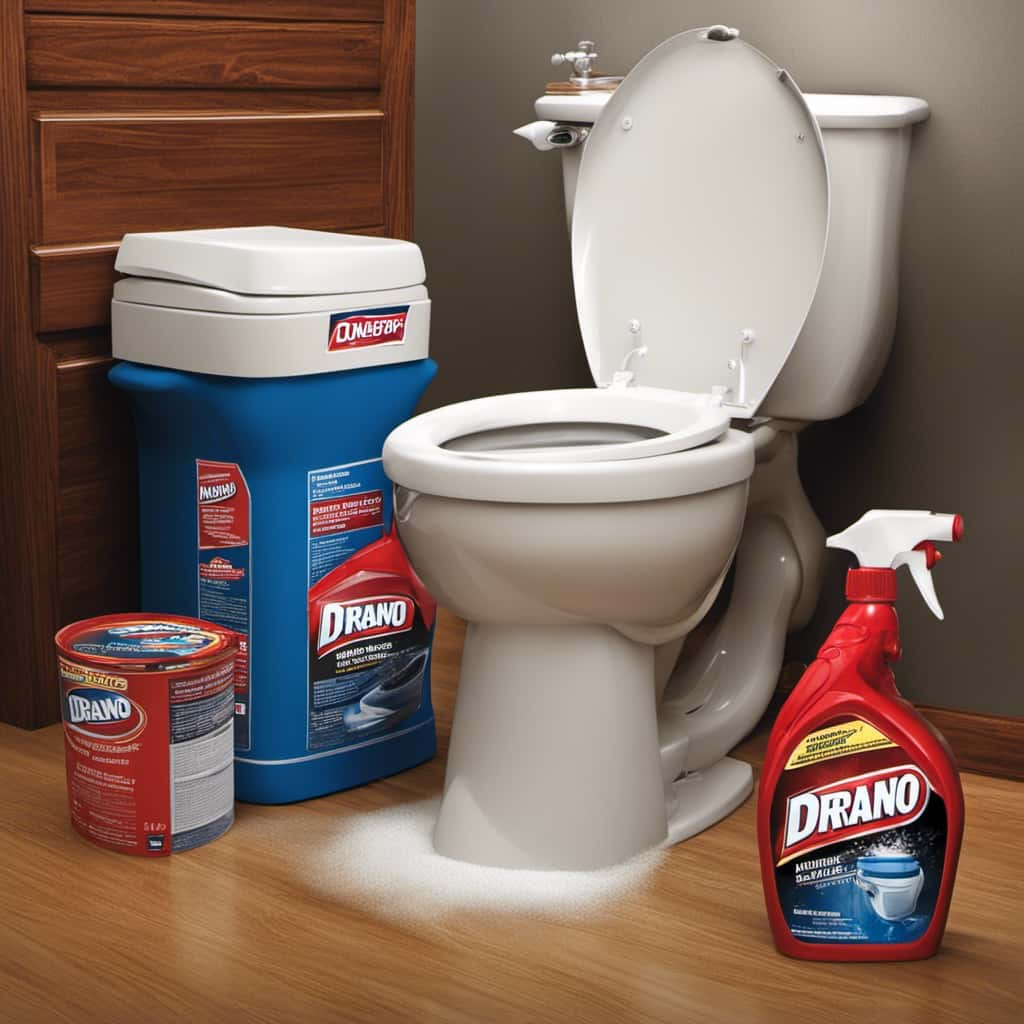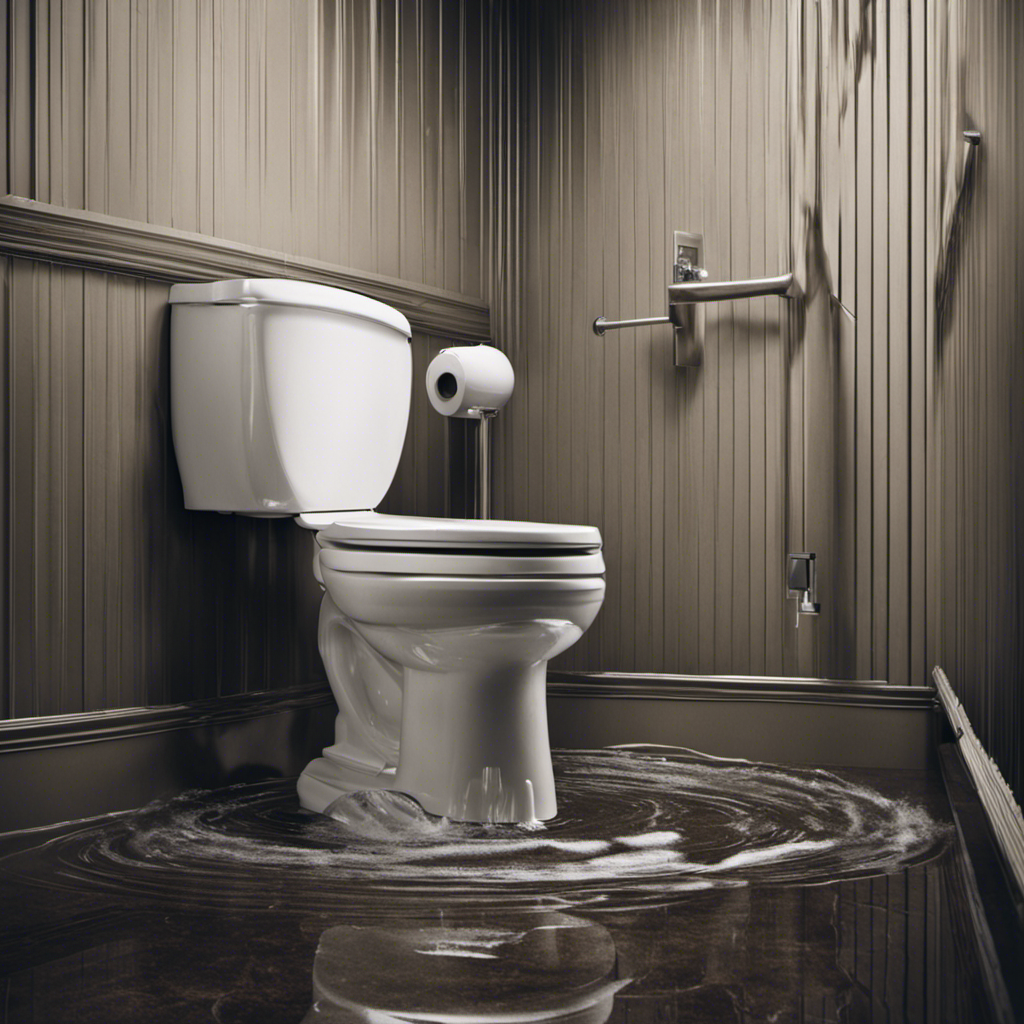Are you tired of waiting for your toilet tank to fill up, only to be left with a frustratingly low water level?
Don’t let this problem flush your patience down the drain!
In this article, we will dive into the common causes of inadequate toilet tank fill and guide you through troubleshooting steps to fix the issue.
From cleaning or replacing a clogged fill valve to addressing a malfunctioning float valve, we’ve got you covered.
Get ready to restore your toilet’s proper tank fill and bid farewell to those empty tank woes.
Key Takeaways
- The most common causes of an inadequate toilet tank fill are a faulty fill valve, toilet tank leaks, strange noises from the tank, and the need to replace the fill valve.
- Troubleshooting steps for a slow-filling toilet tank include checking the water supply valve, examining the fill valve for faults, clearing any clogs in the water line, ensuring the water supply valve is fully open, and replacing a faulty shut off valve if necessary.
- The water supply valve should be fully open and water should be flowing into the tank. If not, the valve may need to be replaced.
- A faulty fill valve should be replaced to prevent toilet tank overflow, ensure efficient water usage, improve water pressure, and prevent costly repairs to internal components.
Common Causes of Inadequate Toilet Tank Fill
One of the most common reasons why your toilet tank won’t fill properly is because of a faulty fill valve. This valve is responsible for regulating the water flow into the tank, and if it is not functioning correctly, it can result in inadequate filling.
A faulty fill valve can cause toilet tank leaks, where water continuously drips into the bowl, wasting water and increasing your water bill. Additionally, you may also hear strange noises coming from your toilet tank, such as hissing or whistling sounds, indicating a problem with the fill valve.
To fix this issue, you will need to replace the faulty fill valve with a new one, ensuring proper water flow and preventing any further leaks or noises.
How to Troubleshoot a Slow-Filling Toilet Tank
If you are experiencing a slow-filling toilet tank, there are a few key points to consider.
First, check the water supply valve to ensure it is fully open and allowing water to flow freely. If the valve is partially closed, it can restrict the water flow and result in a slow fill.
Next, examine the fill valve for any faults or malfunctions. A faulty fill valve can hinder the proper flow of water into the tank, causing a slow fill.
Lastly, a clogged water line can also be a culprit. Inspect the water line for any blockages or debris that may be obstructing the flow of water, and clear the clog if necessary.
Water Supply Valve
Check if you’ve turned on the water supply valve to ensure that your toilet tank fills properly. If your toilet tank is not filling, the first thing you should do is check the water supply valve. This valve controls the flow of water into your toilet tank and if it is not fully open, it can cause low water pressure and prevent the tank from filling properly.
To check the water supply valve, locate the valve usually located behind the toilet near the floor. Turn the valve clockwise to fully open it and ensure that water is flowing into the tank.
If the valve is already fully open and there is still low water pressure or no water flow, it could indicate a faulty shut off valve that needs to be replaced.
Faulty Fill Valve
Make sure the faulty fill valve is replaced if there is low water pressure or no water flow, even if the water supply valve is fully open. The fill valve is responsible for regulating the water level in the toilet tank, and if it is faulty, it can cause various issues with the toilet’s functionality.
Here are four reasons why replacing a faulty fill valve is crucial:
-
Toilet Tank Overflow Prevention: A faulty fill valve can lead to an overflow situation in the toilet tank, causing water to spill onto the bathroom floor. Replacing the fill valve will restore proper water level control and prevent such messy accidents.
-
Efficient Water Usage: A faulty fill valve may result in excessive water consumption, leading to higher water bills. By replacing it, you can ensure that the toilet tank fills efficiently, saving water and reducing costs.
-
Improved Water Pressure: If you’re experiencing low water pressure issues in your toilet, a faulty fill valve could be the culprit. Replacing it will restore proper water flow and improve the overall performance of your toilet.
-
Prevention of Costly Repairs: Ignoring a faulty fill valve can lead to more significant problems down the line, such as damage to the toilet’s internal components. By replacing the faulty fill valve promptly, you can avoid costly repairs and extend the lifespan of your toilet.
Clogged Water Line?
Is there a clog in the water line? If your toilet tank is not filling properly, a clogged pipe could be the culprit. A clogged water line can restrict the flow of water into the tank, resulting in low water pressure and slow filling. To determine if your water line is clogged, you can perform a simple test. First, turn off the water supply to the toilet. Then, disconnect the water line from the toilet tank and place the end in a bucket. Turn the water supply back on briefly and check if water flows freely into the bucket. If it does, the clog is likely in the toilet tank or bowl. However, if water does not flow or flows slowly, you may have a clogged water line. In this case, you should consider calling a professional plumber to remove the clog and restore proper water pressure.
| Common Causes of Clogged Water Lines | Signs of a Clogged Water Line | Tips to Prevent Clogs |
|---|---|---|
| Mineral Buildup | Slow Draining | Regularly clean drains |
| Tree Root Invasion | Gurgling Sounds | Install drain screens |
| Grease and Fat Buildup | Backups in Multiple Fixtures | Avoid pouring oil down drains |
| Foreign Objects | Foul Odors | Dispose of waste properly |
| Old, Deteriorating Pipes | Low Water Pressure | Schedule regular pipe inspections |
Potential Issues With the Toilet Fill Valve
One possible issue with the toilet fill valve might be that it’s not allowing enough water to enter the tank. This can result in a weak flush or a toilet that won’t fill up properly. Signs of a failing fill valve include a constant running sound from the tank, a toilet that takes longer than usual to fill, or water trickling into the bowl.
To troubleshoot the fill valve, you can try the following steps:
- Check the water level in the tank and adjust the fill valve if necessary.
- Clean the fill valve by removing any debris or mineral deposits that may be blocking the water flow.
- Inspect the fill valve for any cracks or damage that may be causing it to malfunction.
- If the fill valve is beyond repair, consider replacing it with a new one to ensure proper water flow and prevent further issues.
By properly maintaining and addressing issues with the toilet fill valve, you can ensure that your toilet functions efficiently and effectively.
Now, let’s move on to the steps to clean or replace a clogged toilet fill valve.
Steps to Clean or Replace a Clogged Toilet Fill Valve
If you’re experiencing issues with your toilet’s fill valve, there are a few common problems that could be causing it. These include a clogged or stuck valve, a faulty valve mechanism, or a low water level in the tank.
To address these issues, you can either clean the fill valve to remove any blockages or replace it entirely with a new one. Troubleshooting the low water level may require adjusting the float or checking for leaks in the supply line.
Common Fill Valve Issues
The most common issue with toilet tank fill valves is that they won’t fill properly. When this happens, it can be frustrating and inconvenient. However, there are several possible reasons why your fill valve isn’t functioning correctly. Here are four common fill valve issues to consider:
-
Water supply problem: Check if the water supply to the toilet tank is turned on and if there are any blockages in the supply line.
-
Float adjustment: Ensure that the float is properly adjusted to the correct water level, as an improperly adjusted float can prevent the valve from filling the tank adequately.
-
Valve blockage: Sediment or debris can accumulate in the fill valve, obstructing the flow of water. Cleaning or replacing the valve may be necessary.
-
Faulty valve mechanism: Over time, the valve mechanism can wear out or become damaged, resulting in improper filling. In such cases, replacing the fill valve is usually the best solution.
Cleaning Vs. Replacing
When troubleshooting common fill valve issues, it’s important to consider whether cleaning or replacing the valve is the best solution.
Regular cleaning maintenance can often resolve minor issues with the fill valve and ensure its optimal performance. Cleaning the valve involves removing any debris or sediment that may be causing a blockage or hindering its function. This can be done by shutting off the water supply, detaching the valve, and using a vinegar solution or a specialized cleaner to dissolve any buildup.
However, if the valve is significantly damaged or shows signs of wear and tear, replacing it may be the more cost-effective option in the long run. It’s crucial to evaluate the severity of the issue and weigh the potential benefits of cleaning versus the durability and reliability of a new fill valve.
Troubleshooting Low Water Level
To troubleshoot low water level in your toilet, start by checking the float arm and adjusting it if necessary. The float arm is responsible for controlling the water level in the tank. If it is not properly adjusted, it can result in a low water level.
Here are four steps you can take to troubleshoot and solve the issue:
-
Inspect the float arm: Ensure that it is not bent or damaged in any way. If it is, you may need to replace it.
-
Adjust the float arm: If the float arm is too low, it may be causing the water to shut off before the tank is fully filled. Adjust it to the correct height.
-
Check the water supply valve: Make sure it is fully open. If it is partially closed, it can restrict the water flow and result in a low water level.
-
Examine the water pressure: Low water pressure can also contribute to a low water level in the toilet tank. Check the water pressure in your home and consider installing a pressure booster if needed.
Why the Toilet Float Valve May Be Malfunctioning
Check if the float valve in your toilet may be malfunctioning. The toilet float mechanism is responsible for regulating the toilet tank water level. A malfunctioning float valve can lead to low water levels in the tank, causing your toilet to not fill properly.
To determine if the float valve is the culprit, first, remove the toilet tank lid. Observe the float ball or cup, which is attached to the fill valve. If the float is not rising with the water level, it may be stuck in a position that prevents it from signaling the fill valve to shut off. This can result in continuous water flow or insufficient water filling.
To fix a malfunctioning float valve, you may need to adjust the float arm, replace the float ball, or clean any debris that may be causing the obstruction.
Fixing a Faulty Toilet Float Valve for Proper Tank Fill
If the float valve is not rising with the water level, it may be stuck in a position that prevents it from signaling the fill valve to shut off. Troubleshooting toilet leaks and adjusting the water level can help fix a faulty toilet float valve for proper tank fill. Here are four steps you can take to address this issue:
-
Check the float valve for any debris or mineral buildup that might be causing it to stick. Clean the valve thoroughly using a mixture of vinegar and water.
-
Verify that the float arm is properly attached to the valve. Adjust it if necessary to ensure it moves freely as the water level changes.
-
Inspect the fill valve for any damage or wear. If needed, replace the fill valve with a new one.
-
Ensure that the water level in the tank is set correctly. Adjust the water level by turning the adjustment screw on the fill valve.
Other Factors Affecting Toilet Tank Fill Rate
Now that you’ve fixed the faulty float valve and ensured proper tank fill in your toilet, it’s important to consider other factors that can affect the fill rate.
Two common issues that can hinder the tank fill process are toilet tank leaks and water pressure problems.
Toilet tank leaks occur when water slowly escapes from the tank into the bowl, leading to a constant need for refilling. This leakage can be caused by a faulty flapper valve, a cracked tank, or loose connections. Identifying and repairing these leaks will help maintain an efficient fill rate.
Water pressure problems can also impact the toilet tank fill rate. Low water pressure can result in a slow refill, while high water pressure can cause the fill valve to close too quickly, leading to incomplete tank fills. Installing a pressure regulator can help regulate the water pressure and ensure consistent tank fill.
Conclusion
So there you have it – a comprehensive guide on why your toilet tank may not be filling properly and how to fix it.
From clogged fill valves to malfunctioning float valves, there are several potential issues that can disrupt the fill rate of your toilet tank.
By troubleshooting and addressing these problems, you can ensure a smooth and efficient flushing experience.
Remember, just like a well-oiled machine, your toilet needs proper maintenance to keep it running smoothly.
Don’t let a slow-filling tank be the metaphorical wrench in your plumbing system’s gears.










